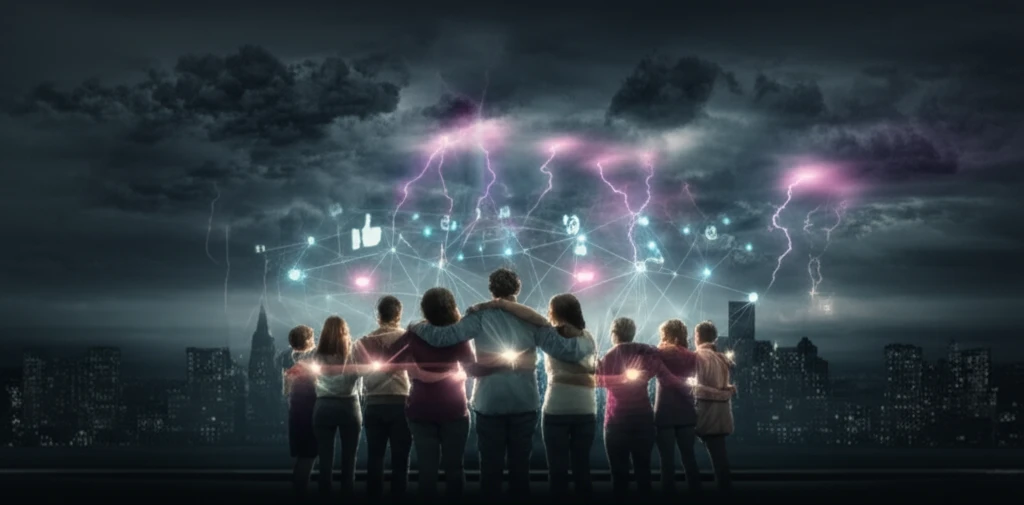
Social Media to the Rescue: How Communities Unite & Thrive During Disasters
"Uncover the power of social media as a vital tool in disaster communication, fostering community resilience and combating misinformation in times of crisis."
In an era defined by instant communication, social media has emerged as a critical tool during disasters. From earthquakes and hurricanes to public health emergencies, these platforms connect communities, disseminate vital information, and facilitate aid. However, the effectiveness of social media in crisis situations depends on careful planning, strategic implementation, and a deep understanding of community needs.
Traditional disaster communication often struggles with delays and limited reach. Social media circumvents these challenges, enabling real-time updates, direct engagement with affected populations, and rapid debunking of misinformation. The public is increasingly reliant on these platforms for everything from evacuation notices to resource availability, and emotional support.
This article explores the best practices for leveraging social media in disaster communication. We'll delve into a comprehensive review of research, examining how governmental agencies, implementing partners, and individuals can harness these tools to promote health protection, dispel rumors, and build more resilient communities. Discover the strategies that work, the pitfalls to avoid, and the future of social media's role in disaster response.
Harnessing Social Media: Strategies for Effective Disaster Communication

Effective disaster communication through social media is not just about broadcasting information; it's about creating a two-way dialogue. Communities need to be able to ask questions, share their experiences, and receive timely, accurate responses. Here are key strategies to make social media a powerful asset during crises:
- Contextualize for Your Audience: Understand how different groups within your community use social media. Consider factors like age, language, socioeconomic status, and access to technology. Tailor your messages to resonate with specific populations and address their unique needs.
- Incorporate into Daily Operations: Don't wait for a disaster to start using social media. Integrate these platforms into the daily operations of governmental agencies and implementing partners. This builds familiarity, trust, and a network of engaged followers before a crisis strikes.
- Prioritize Training and Resources: Invest in training dedicated social media officers who can build relationships with stakeholders and use these platforms effectively. Ensure they are equipped to monitor public reactions, address concerns, and dispel rumors quickly.
The Future of Disaster Communication: Building Stronger, More Connected Communities
Social media's role in disaster communication is constantly evolving. As technology advances and platforms change, it's crucial to stay informed and adapt your strategies accordingly. However, the core principles of effective communication – building trust, fostering dialogue, and prioritizing community needs – will remain essential.
While this review highlights the power of social media, it also underscores the importance of addressing digital divides. Not everyone has access to these platforms, and it's critical to reach vulnerable populations through alternative channels. A multi-faceted communication strategy that combines social media with traditional news media, community outreach, and direct engagement is the most effective approach.
By embracing social media as a tool for connection, information sharing, and community support, we can build stronger, more resilient communities that are better prepared to face the challenges of future disasters. The key is to act now: integrate these platforms into daily operations, invest in training, and prioritize the needs of your audience.
